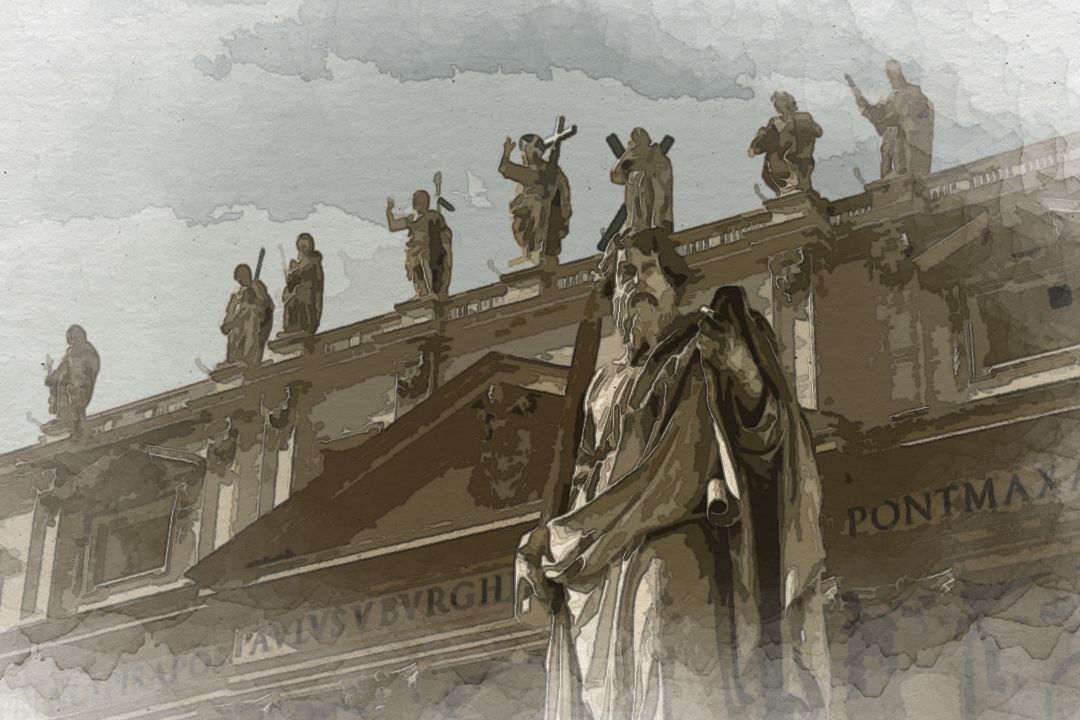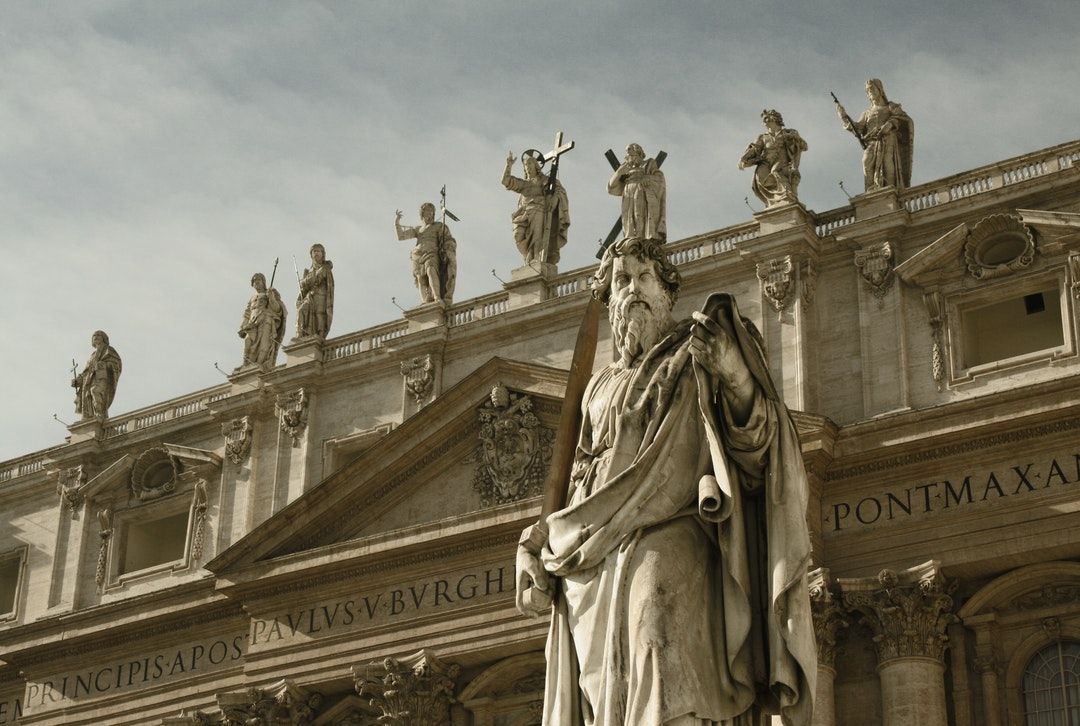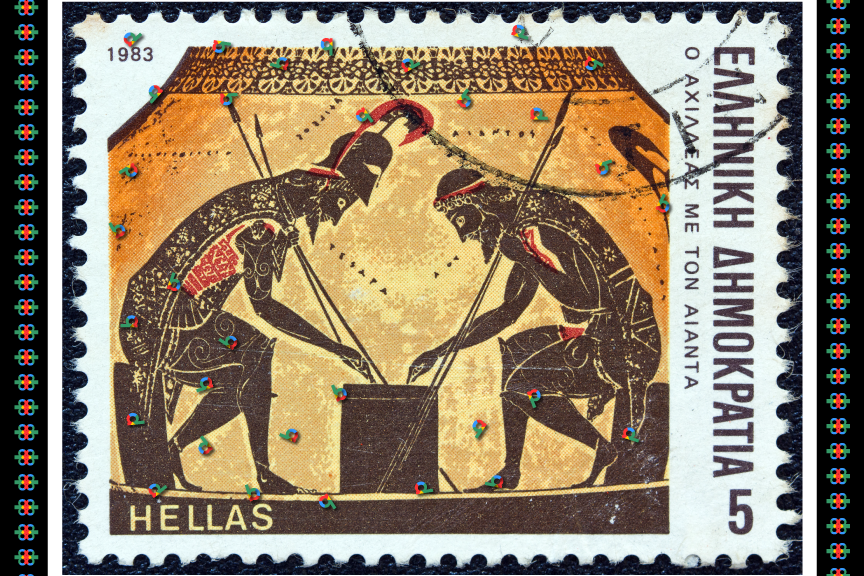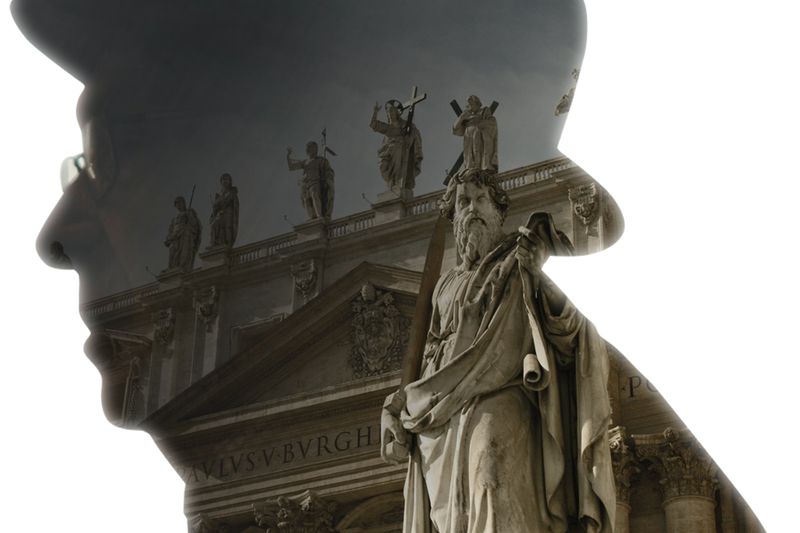Eternal Light Mixed With External Narrative

God-like wisdom or the Ideal to Work Towards?
A shadowy figure emerged at the forefront of yesterday and tomorrow—a silhouette cast against the ever-shifting background of the cosmic theatre. This form, steeped in the echoes of Hellenic essence, stood as a fleeting representation of something greater, an imperfect reflection of timeless truths that transcended the transitory nature of the material world.
As the initial tableau unfolded, the silhouette dissipated, yielding to the collective thoughts of generations. As eternal light intertwined seamlessly with an external narrative, offering a glimpse into a realm of perfect and unchanging ideals beyond the surface of the perceptible.
The question arose: God-like wisdom or the Ideal to Work Towards? A conundrum echoing through the minds of millions, philosophy and spirituality just happened to be how we categorize the ironies within. Resonating with the essence of human curiosity, let's imagine a shadowy figure, a mere visage of ancient wisdom, faded into the musings of minds seeking purpose and understanding.
In the ceaseless ebb and flow of existence, the patterns we recall reflect the chaos and harmony inherent in the cosmos of our design. The echoes of Hellenic essence linger, whispering tales of gods and ideals that once graced humanity's collective imagination. Yet, as the silhouette dissipated, a profound realization emerged—the choice between embracing god-like wisdom or aspiring towards ideals was a journey intrinsic to the human experience.
The imperfect reflection of timeless truths beckoned individuals to navigate the ideals of their existence, charting a course between the ethereal realms of divinity and the tangible pursuit of earthly ideals. The transient nature of life seemed to be the canvas upon which humanity could paint its aspirations and dreams, striving to transcend the transient and reach the eternal or future generations (chicken or egg).
The interplay of eternal light and mortal thought created a cornucopia of perspectives, each offering a unique glimpse into the realm of perfect and unchanging ideals. The words of Gerard Manley Hopkins resonated, proclaiming that the world itself was charged with the grandeur of God—a divine current pulsating through every atom, every heartbeat, and every fleeting moment.
The world is charged with the grandeur of God.
— Gerard Manley Hopkins (1844-1889)
In the quest for understanding, the dichotomy between god-like wisdom and the ideal to work towards became a dual compass guiding humanity through the vast sea of possibilities. Some sought to channel the divine, tapping into an omniscient source of wisdom that transcended mortal limitations. Inspired by the beauty of ideals, others embarked on a journey to shape the world through visions born from the depths of human imagination.
Perhaps, in synthesizing these two paths, a harmonious balance could be struck—a realization that god-like wisdom and the pursuit of ideals were not mutually exclusive but interconnected threads in the intricate tapestry of human existence. As the cosmic theatre continued its ceaseless performance, the choice remained an ever-present reminder, inviting each individual to find meaning in the dance of shadows and light.
In the ensuing sequence, the second image unveiled the subtleties of oversight inherent in mortal pursuits. They intimated the shadows, a sobering reminder that the true nature of opportunities often lay obscured beneath the guise of everyday toil. The discerning observer who looked beyond the superficial could unearth hidden potential within the mundane façade.
As the seeker delved beyond the surface of routine and monotony, the cosmic gallery revealed its second image—a captivating depiction of human endeavours and the intricacies inherent in mortal pursuits. The shadows, cast by the ceaseless toil of existence, whispered a cautionary tale—a reminder that the essence of opportunity frequently lay concealed beneath the typical attire of daily labour.
Opportunity is missed by most people because it is dressed in overalls and looks like work.
— Thomas Edison (1847-1931)
Guided by the echoes of Edison's proclamation that opportunity often wore the humble garb of hard work, the seeker became an architect of destiny. Each mundane task, viewed with new eyes, became a canvas for the brushstrokes of dedication and perseverance. Armed with insight and resilience, the observer navigated the labyrinth of challenges, unveiling hidden treasures within the folds of their diligent efforts.
Yet, the cosmic dance was not without its challenges. As the seeker stood at the crossroads of destiny, a third image unfolded—a portrayal of choices and consequences. The observer, now a custodian of their fate, realized that the journey went beyond recognizing opportunities; it demanded intentional choices and a conscious alignment of actions with aspirations.
The cosmic gallery resonated with the symphony of free will, and the ever-vigilant seeker approached decisions with a newfound depth of understanding. Each choice sent ripples through the fabric of existence, shaping destinies and contributing to the evolving narrative of the universe.
The choice is yours, my friends, mortal existence or unfolding story, which ultimately testifys to the potential inherent in recognizing hidden brilliance within the ordinary. The cosmic theatre awaited the next act, a perpetual cycle of choice, effort, and enduring legacy that would continue to confine existence.
Playing with shadows and ideas, what materializes as a silhouette gracefully surrenders her prominence to the concept of death.
Death destroys a man, but the idea of death saves him.
— E. M. Forster (1879-1970)
Contemplating death becomes the conduit to the eternal—a liberation of the soul from the ephemeral constraints of the material world. Having navigated many opportunities and choices, the seeker now confronted the enigma of life's ultimate certainty. The shadows cast by the concept of death whispered across the vast expanse of the cosmic canvas, inviting contemplation on the fragility of existence.
Death, once perceived as a harbinger of darkness, became a threshold—a passage to the eternal realms, a liberation of the soul from the ephemeral constraints of the material world. As the seeker grappled with this profound revelation, the gallery unfolded a series of vignettes—a kaleidoscope of moments where death, in its various forms, shaped the destinies of mortal beings. There were elegies sung for those who had departed and tales of resilience and rebirth amid the shroud of finality.
The observer, now a witness to the cosmic drama's more sombre movements, contemplated the duality inherent in the concept of death. It was both an annihilator, extinguishing the flame of mortal existence, and a saviour, offering release from the temporal struggles of earthly life. The seeker understood that death was not merely an end but a transformative force—an integral part of life's cycle (cosmically deterministic?). The concept of death became the bridge between the transient and the eternal, a reminder that every fleeting moment held the potential for rebirth and renewal.
Now resonating with the profound truth of mortality, we invite the observer to embrace the impermanence of life. Each shadow, each idea, and each concept played their part in the ongoing symphony. In this symphony, death, as both destroyer and saviour, wove its threads into the fabric of existence, enriching the cosmic narrative with the profound complexity of the human experience.
The final revelation mirrored the essence of timeless sagacity as the shadows on the wall transformed into the wisdom of the Ancients.
Counsel woven into the fabric of real life is wisdom.
— Walter Benjamin (1892-1940)
This declaration emerged from the shadows and is now infused with the distilled essence of enduring truths. The mentor möbius, a guiding force through life's labyrinth, emerged as a symbol of enlightened leadership, directing humanity toward pursuing virtuous ideals and contemplating truths transcending temporal boundaries.
The awareness of opportunity, choices, and the contemplation of death provides an understanding before the embodiment of this distilled wisdom—the mentor möbius. A luminescent figure from ancient insights emerges as a guiding force, symbolizing enlightened leadership. Beckoned the seeker closer, and in the presence of this ethereal guide, the observer felt a profound connection to the collective wisdom of the ages—an archetypal figure embodied the essence of enduring truths—virtues that transcended the transient nature of the material world.
Humanity was directed toward the pursuit of virtuous ideals. The cosmic dance, once a chaotic interplay of light and shadow, now moved with a harmonious rhythm, each step guided by the wisdom woven into the fabric of real life. The observer, now not merely an onlooker but an active participant, engaged in pursuing these ideals, contributing to the ongoing narrative of the universe.
As the mentor möbius shared insights drawn from the collective consciousness of the Ancients, the seeker realized that the pursuit of wisdom was not a solitary endeavour. It was a collaborative dance where each individual played a unique role in the grand tapestry of existence. The mentor möbius, with its timeless wisdom, illuminated the path toward a deeper understanding of the cosmos and the profound interconnectedness of all things.
In the cosmic theatre's final act, the observer, guided by the mentor möbius, became an emissary of wisdom—a beacon of light in the ever-shifting shadows of existence. The whispers of the Ancients, once mere echoes, now reverberated through the observer's actions, contributing to the eternal dialogue between mortality and the enduring truths that transcended the boundaries of time. Having unveiled its secrets, the cosmic gallery awaited the next generation of seekers to continue the dance, each step resonating with the counsel woven into the fabric of real life—wisdom that endured through the ages.
The story unfolded in this intricate narrative—a tale of ephemeral silhouettes and enduring ideals, fleeting reflections, economic opportunities veiled in labour, the transcendence of mortality, and timeless verities. The silhouette, a transient figure in the vast panorama of existence, was a poignant reminder of the imperative to transcend the imaginary world and seek truths resonating with reality's essence.

The planksip Writers' Cooperative is proud to sponsor an exciting article rewriting competition where you can win part of over $750,000 in available prize money.
Figures of Speech Collection Personified
Our editorial instructions for your contest submission are simple: incorporate the quotes and imagery from the above article into your submission.
What emerges is entirely up to you!
Winners receive $500 per winning entry multiplied by the article's featured quotes. Our largest prize is $8,000 for rewriting the following article;

At planksip, we believe in changing the way people engage—at least, that's the Idea (ἰδέα). By becoming a member of our thought-provoking community, you'll have the chance to win incredible prizes and access our extensive network of media outlets, which will amplify your voice as a thought leader. Your membership truly matters!


